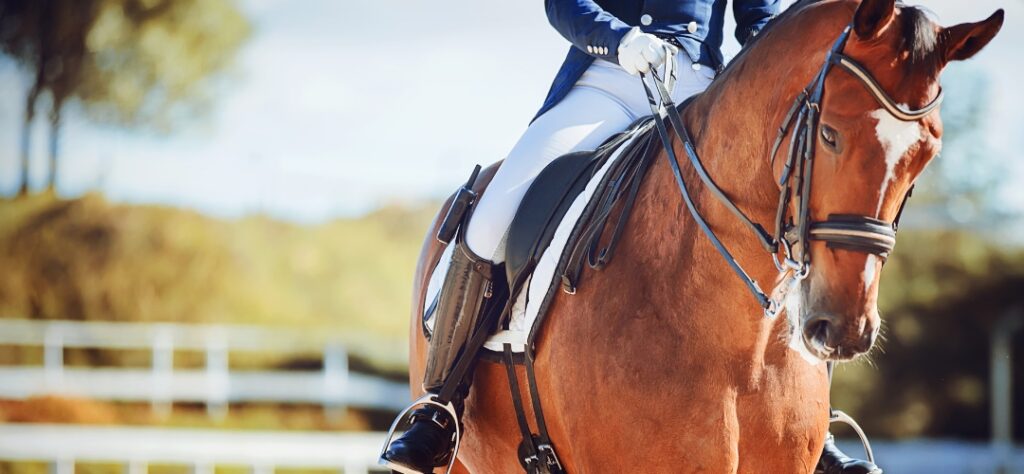Building a strong topline in horses is essential for optimal performance and overall well-being. The topline refers to the muscles that support the spine, neck, and hindquarters, giving the horse its overall balance and strength. While proper exercise and training play a crucial role in developing a horse’s topline, nutrition also plays a significant part in the process.
In this article, we will explore the role of nutrition in building and maintaining the topline, discuss essential nutrients for a strong topline, and provide guidance on assessing your horse’s nutritional needs while balancing it with exercise.
Role of Nutrition in Building and Maintaining the Topline
Proper nutrition is the foundation for a horse’s overall health and athletic performance, including developing a strong topline. The muscles that make up the topline require specific nutrients to grow, repair, and maintain their strength. Adequate protein, amino acids, vitamins, and minerals are critical in supporting muscle development and repair. Additionally, a well-rounded diet ensures proper energy balance for muscle conditioning.
Regular monitoring and adjustments are key to maintaining your horse’s optimal nutrition. As your horse’s needs may change over time due to factors such as age, activity level, or health conditions, it’s important to periodically reassess their diet and make necessary modifications. By staying proactive and attentive to your horse’s nutritional needs, you can help them achieve and maintain a strong and healthy topline.
Body condition scoring is an essential tool for assessing your horse’s nutritional needs. By visually and physically evaluating your horse’s body condition, you can determine whether adjustments need to be made to their diet. Body condition scoring takes into account factors such as the amount of fat cover over the horse’s ribs, the prominence of their withers, and the shape of their neck and hindquarters.
It’s essential to remember that building a topline takes time and consistency. Slow and gradual changes to the horse’s diet should be made to avoid digestive upset. Abrupt changes in feed can lead to colic or other gastrointestinal issues. By gradually adjusting the horse’s diet and closely monitoring their response, you can ensure that their nutrition supports their topline development effectively.
In addition to a balanced diet, proper hydration is also key to supporting a horse’s overall health and performance. Ensuring access to clean, fresh water at all times, especially during and after exercise, is essential to prevent dehydration and promote optimal muscle function.
Essential Nutrients for a Strong Topline
When it comes to building a strong topline in horses, there are several essential nutrients that play a crucial role in muscle development and overall health. While protein is often the first nutrient that comes to mind, there are other important factors to consider as well.
Protein is a key component in building and maintaining the topline. It provides the necessary building blocks for muscle growth and repair. High-quality protein sources, such as soybean meal, alfalfa, and whey protein, are essential in a horse’s diet. These protein sources not only provide the necessary building blocks for muscle development but also offer a range of other beneficial nutrients.
Vitamins and minerals play a vital role in supporting the topline. Vitamin E, for example, is an antioxidant that helps protect muscle cells from damage caused by free radicals. It also aids in muscle recovery after exercise. This vitamin is particularly important for horses in intense training or competition, as their muscles are more prone to oxidative stress.
Minerals like calcium, phosphorus, and magnesium are essential for muscle contraction and relaxation. Selenium, another essential nutrient, is crucial for muscle metabolism and integrity.
In addition to protein and micronutrients, a proper topline-building diet should include essential fatty acids. Omega-3 fatty acids, commonly found in flaxseed and fish oil, have anti-inflammatory properties, which can aid in muscle repair and recovery. These fatty acids not only contribute to overall muscle health but also have numerous other benefits for the horse’s overall well-being.
Feeding a horse a well-balanced diet that includes a variety of forages, grains, and supplements is crucial for topline development. Forages, such as hay and pasture, provide the necessary fiber and nutrients for overall digestive health. Grains, like oats and barley, are excellent sources of energy for muscle conditioning.
Assessing Your Horse’s Nutritional Needs
It’s important to understand the specific needs of your horse. Different horses may require different levels of nutrients depending on their age, breed, and activity level. For example, young horses have different dietary requirements compared to older horses. Foals require a diet rich in nutrients to support their rapid growth and development, while senior horses may need specialized feeds to maintain their overall health and well-being. In addition, a young horse in the early stages of training may need more protein and energy to support growth and development, while an older horse may require additional joint support and antioxidants to maintain overall health.
Breed is another important factor to consider. Different horse breeds have varying metabolic rates and body compositions, which can affect their nutritional needs. For instance, draft horses tend to have slower metabolisms and may require lower-calorie diets compared to hot-blooded breeds like Thoroughbreds, which have higher energy requirements.
Weight management is crucial for maintaining a horse’s overall health and topline development. Overweight horses may need a controlled diet to help them shed excess pounds and prevent obesity-related health issues. On the other hand, underweight horses may require a higher calorie intake to help them gain weight and build muscle.
Activity level is another critical factor to consider when evaluating a horse’s nutritional needs. Horses in intense training or competition may require higher energy feeds to fuel their performance and support muscle development. Conversely, horses in light work or retirement may need a more moderate diet to maintain their weight and overall health.
Similarly, adjusting the horse’s diet based on changes in workload and exercise intensity is crucial to ensure adequate energy and nutrient supply. For example, if a horse is transitioning from light to moderate exercise, increasing the amount of high-quality forage and adding a concentrated feed specifically formulated for performance horses can help meet the increased energy requirements.
Balancing Nutrition with Exercise
While nutrition plays a significant role in building a strong topline, it should always be complemented by appropriate exercise and conditioning programs. Without regular exercise, even the most well-balanced diet may not yield the desired results. Therefore, it is crucial to work with a knowledgeable equine professional to develop a comprehensive plan that includes both nutrition and exercise tailored to your horse’s specific needs.
Nutrition and exercise go hand in hand when it comes to building a strong topline. While nutrition provides the essential building blocks for muscle development, exercise stimulates muscle growth and strengthens the existing musculature. A well-designed training program, incorporating a variety of exercises such as lunging, hill work, and correct riding techniques, can help target and engage the specific muscles responsible for developing and maintaining the topline.
It’s important to note that topline development takes time and consistency. It’s not something that can be achieved overnight. Regular exercise and conditioning play a significant role in building and maintaining the topline. A combination of cardiovascular exercise, strength training, and stretching exercises can help develop and strengthen the muscles in the topline.
It’s essential to gradually increase the intensity and duration of exercise over time. This allows the horse to adapt to the increased demands placed on its muscles and prevents injury. Starting with shorter, less intense workouts and gradually building up to longer, more challenging sessions can help ensure a safe and effective training program.
Ultimately, consistent attention to both nutrition and exercise is essential for building a horse’s topline. Providing the necessary nutrients through a balanced diet and appropriate supplementation, while carefully implementing a structured exercise program, will help support the development and maintenance of a strong and healthy equine topline.


